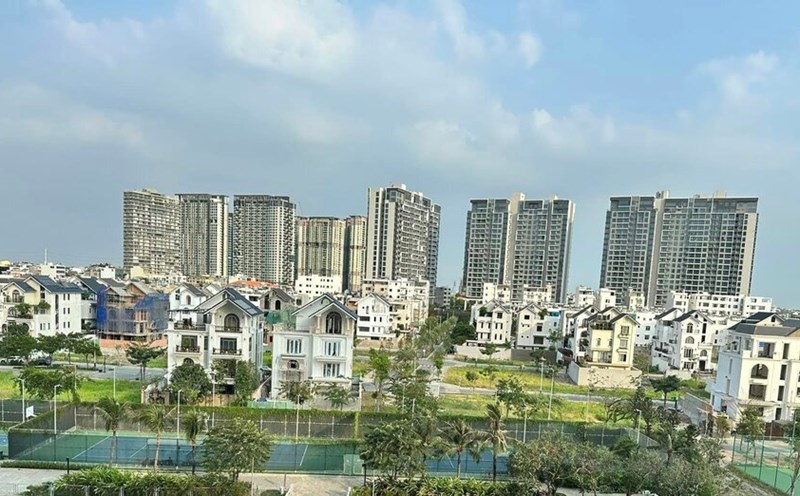In the context of increasingly depleted land funds in central areas of Ho Chi Minh City and escalating land prices, investors are only focusing on promoting the high-end segment.
At a recent event, Masterise Homes introduced the Lake building in the Marriott Residences Special Edition luxury apartment complex in the Grand Marina project, Saigon ward (old district 1).
According to the price list announced by the investor, a single-bedroom apartment with an area of 54-64 m2 costs 29-31 billion VND; a two-bedroom apartment with an area of 67-88 m2 is being offered for sale from 33-50 billion VND. Thus, apartments have an average price ranging from 450-600 million VND/m2, including tax and fee.
According to a survey of market information, around the central area of Ho Chi Minh City, the selling price of existing apartment projects has exceeded 400 million VND/m2. With the current price level, according to forecasts from market research companies, in the near future, projects in the new urban area of Thu Thiem are expected to welcome many other luxury projects and the price level may be even higher when land funds are increasingly scarce and construction costs are expensive.
Meanwhile, the report on the average primary selling price of apartments in Ho Chi Minh City is also overwhelming those who want to buy a house. According to the second quarter report of 2025 of some market research units, the average primary price of apartments in Ho Chi Minh City reached more than 95 million VND/m2, an increase of nearly 10% over the same period in 2024. New sales have recorded an increase of 8-15%, in which luxury apartments account for more than 52% of the market supply.
According to data from the Ho Chi Minh City Real Estate Association (HoREA), from 2024 to now, housing prices have been continuously climbing, reaching an average of VND90 million/m2, equivalent to about VND9.7 billion per house (this is only the primary price approved for the project, not the selling price).
Experts point out four main reasons why prices continue to be "affected" at high levels. Firstly, although supply has increased, it has not yet met demand, especially in the appropriate price segment. Second, input costs, especially land costs, are increasing.
Third, speculative psychology, expectations of surfing from planning information, mergers, and infrastructure cause prices to be pushed up commensurate with real value. Fourth, the rapid urbanization rate and increased real demand also contribute to keeping housing prices high.
In the second half of 2025, housing supply is expected to continue to improve thanks to a number of legal clearance policies. However, the imbalance between supply and demand is very difficult to overcome in the short term, as projects opened for sale are still mainly in the high price segment due to sharp increases in project development costs, especially land costs and infrastructure investment.
Rising real estate prices not only make it difficult for middle- and low-income people to access housing, but also pose risks to the market in general. Many experts have warned that using transaction price data during the "hot" period as a basis for determining land prices can lead to deviations in valuation, distort the market, cause inadequacies in budget collection, compensation or tax calculation. If not controlled promptly, the market could face the risk of bubbles, leading to the risk of a broken chain.












